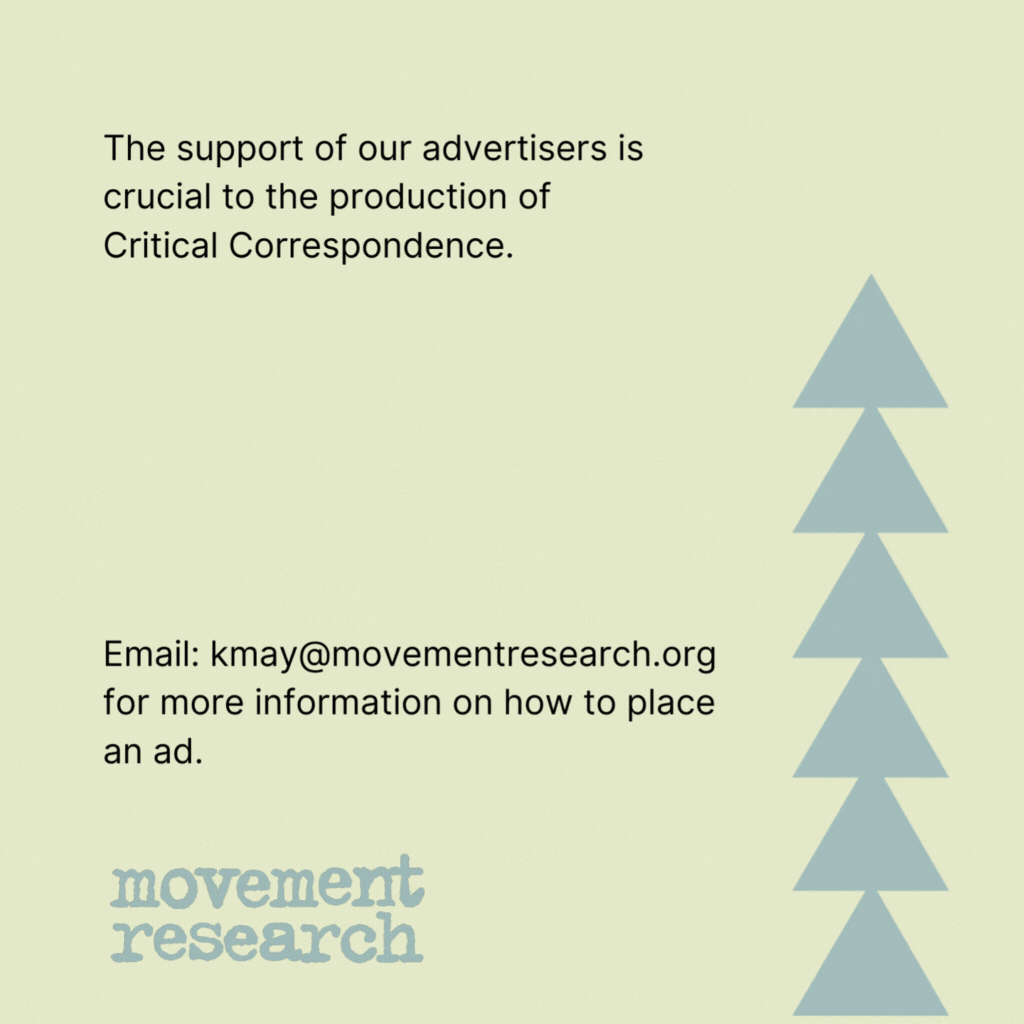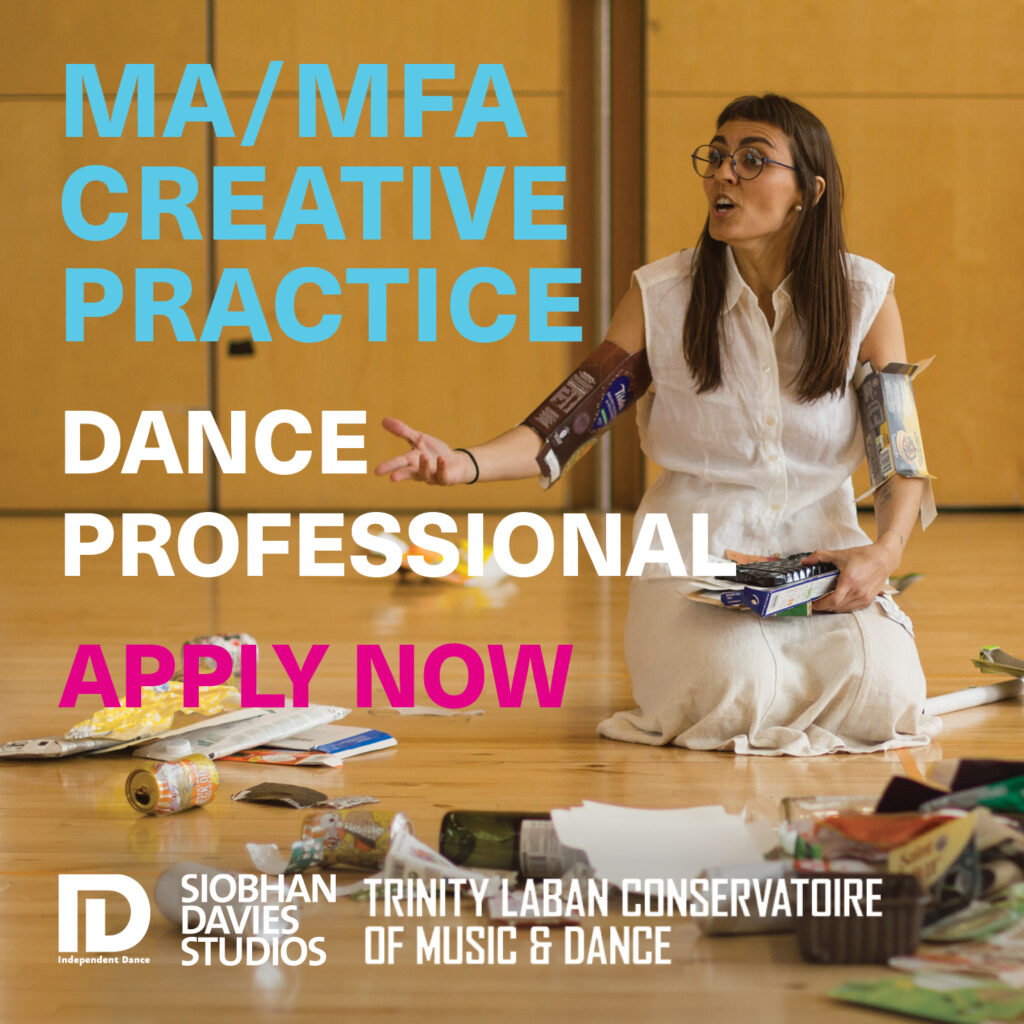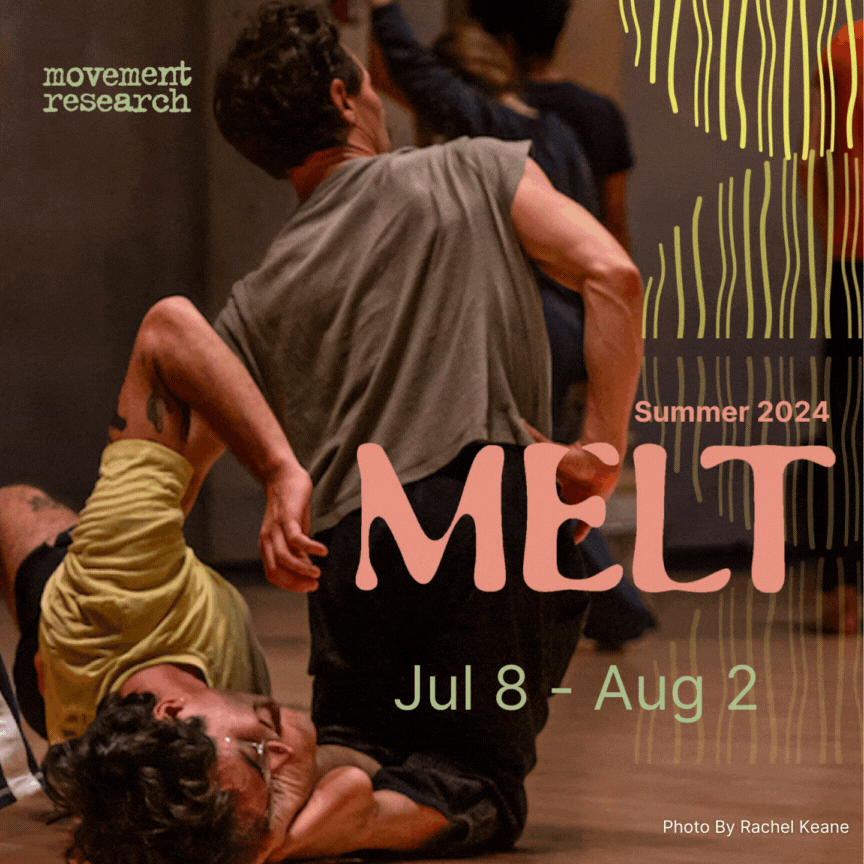Katie Schetlick interviews Samar Haddad King, artistic director of Yaa Samar! Dance Theatre, a New York dance theater company. They discuss King’s exploration of Palestinian identity and family history in her new work, which is being made with a group of dancers at the Ramallah Contemporary Dance Festival in Palestine. This is the third and final interview in a series initiated by Schetlick, documenting her experience at the festival.
Interview Date: December 14, 2011
Download a PDF of this conversation
Katie Schetlick: How are things going over there with the development of your new work?
Samar Haddad King: It has taken me a bit to get going. My mind is still wrapped up in the last piece, Bound.
Katie: Did you go in and teach a class first? How did you start the process?
Samar: I started with a rehearsal but I am teaching them ballet actually. They have had ballet training before but it came from the school of “squeeze everything.” A lot of them have knee problems and I think it is also because of their dabke [traditional Palestinian dance] training. A large part of teaching is a matter of helping them deal with injuries that may have happened years ago.
I have divided them up into groups for rehearsal and the piece is sectional for the time being. It varies from rehearsal to rehearsal who will be in attendance since they too have lives outside of the studio, school and work, and they are not being paid for their time here.
Katie: Did you go in with a rough idea, knowing the rehearsal time would be sporadic?
Samar: I did. I went in with three undeveloped ideas and one started speaking to me more. We are dealing with memory. 1948 [the year of Israel’s birth and the simultaneous expulsion of over 700,000 Palestinians from their homes] is still largely on people’s minds here, my mother included. Many people who were born before 1948 are still living, so that memory is still very much alive. A lot of people currently living in the West Bank aren’t originally from the West Bank. They are from what is now Israel. So, since 1948 there has been this issue of displacement. I mean it is obviously now a large aspect of the Palestinian identity: the displacement. You see it in the folklore and even the contemporary art.
I was interested in all of this at an early age just from hearing conversations in my family—I remember asking my aunt, “Did Taita [grandma] accept Jordan as her home?” And my aunt, without hesitation, said, “No.” She always felt like she was going to go back to where she was from one day, which was Palestine. That refugee idea resonates highly with many Palestinian families. The piece is dealing with an older person who doesn’t live here [in Palestine] anymore, who has flashbacks of himself and his wife.
The flashbacks aren’t necessarily linear or entirely factual. There is randomness in memory and what you remember. I am structuring it more through an actual narrative from the perspective of one, a grandfather, and the ideas he is sharing with his grandchild about these memories. In the story the grandfather dies and writes the grandchild a letter and basically says, “I need you to take my ashes back to my wife and back to my land. I need you to spread them.” In actuality, this is highly unlikely since cremation isn’t practiced or widely accepted in the Arab world. I am hoping to push these ideas of truth in the story, to put pressure on notions of fiction and non-fiction and on ownership of the “right” memory.
Katie: Thinking about these notions of story and truth, when you went into the studio did you share your family’s story and your history with the dancers?
Samar: I did and I didn’t. I kind of told them in waves. I talked to a few of them about it, but it’s a two-fold thing, the sharing and creating. With [a previous work] Bound, we started with writing stories pretty early on. I have been working for about a month and I haven’t been writing intensely; we are still keeping it quite physical.
I can feel from [the dancers] that there is this push—they want me to teach them steps and not just have them do task oriented things. Which I understand. When you are learning and training in many styles then you have more freedom to break from them. But when you have never had a main style except for folkloric then you crave the material of something else to guide you almost like a place to jump from or a language. And they are not interested in bringing the folkloric to their work as a basic language. They believe, which I believe too, that to try and keep the “Palestinian-ness” of their art through sticking to the old ways will box them in—it [their “Palestinian-ness”] is going to be there by nature of who they are no matter what they do. You know like what they said in the Facebook discussion they had with you, it is not necessarily about being Palestinian and showing the world that Palestinians can dance. For them they just want to f****** dance (see excerpt of rehearsal below with dancer, Yazan Eweidat).
For me, because I have departed from that way of working [of giving steps], it has been a big challenge. I am not used to going in and creating movement. I am used to working off of people. Of course, I am working off them as we are creating steps, but it is different. Like with anything and with any new process, I have had to adapt. If we are stuck we stay stuck and just breath until we figure it out. Sometimes we just don’t try to push it and then the next day something comes.
When I come back [to Palestine] I think we will start incorporating more writing. Because of their folkloric training there is already a connection to narrative in their bodies. But embodying a specific character is much different than portraying a folkloric tale. With each person having a solid identity in this piece, developing that individual identity will be the next step.
Katie: Will there be text involved like in your other works?
Samar: Yes, there will be voiceovers but I don’t think there will be video involved.
Katie: Is the work being created for a particular performance with a specific audience in mind?
Samar: Yes, it is for the festival [Ramallah Contemporary Dance Festival]. It is exciting to work with them [the dancers] on something that has become so important to the development of dance here. I know them and have known a few of them for several years, so they are not random people. They are close to my heart and I know their stories and the simple fact that it is not easy doing contemporary dance here, which actually has nothing to do with religion. It has just to do with the same thing in the West—“What kind of job are you going to get with it?” “How will you take care of yourself?” Those things that parents are more worried about. Dancing for a living is not an easy thing anywhere but dance for most Palestinians has largely been experienced as a part of their celebrations and gatherings. To try and explain to parents—or society at large—that dance can also be a meaningful profession is a challenge.
I always thought my work was quite accessible to non-dancers and a non-arts crowd, so I am hoping that this will be one of those pieces that people will be able to relate to in some way. I have an interesting perspective because I grew up in the south, in Alabama, with a Palestinian mother. Traveling back and forth to Palestine to visit my family as I was growing up had a profound effect on the way I see things and obviously living here now does too. I can’t say that I am exactly like the dancers here because I grew up quite differently from a lot of them. But we have so many shared values through art and dance. It is nice to shape the work with them as someone coming from outside and inside.
Katie: There is already a level of trust there. A platform to begin a dialogue, if you will.
Samar: Exactly. It’s super inspiring for me because they don’t just settle for what is there. They do not allow me to fall back into my comfort zones or safety spots. We have been playing with working with very little so we can see how far the possibilities can stretch and where they might lead us. We will see what happens.






